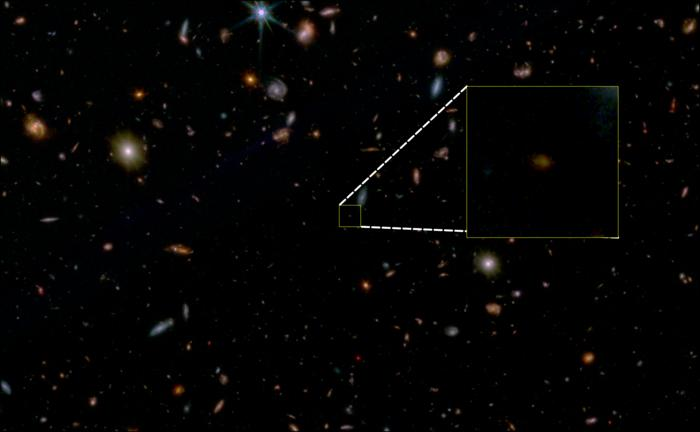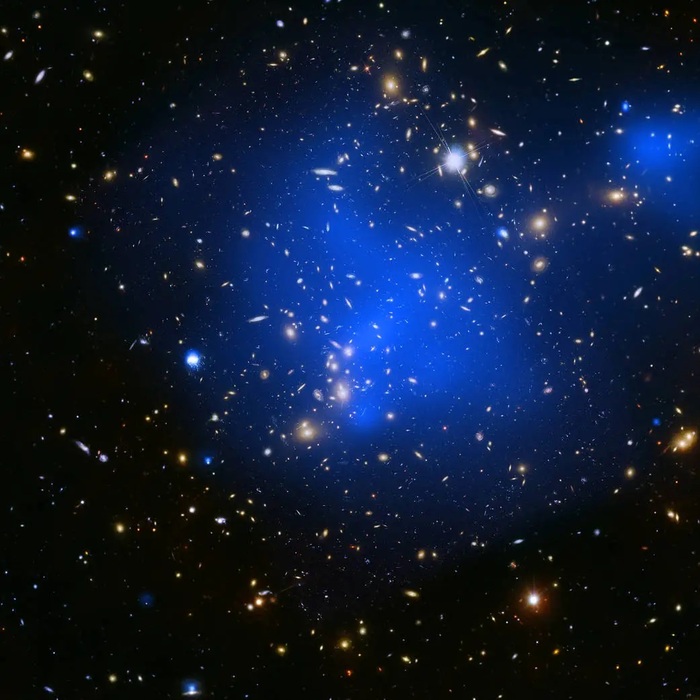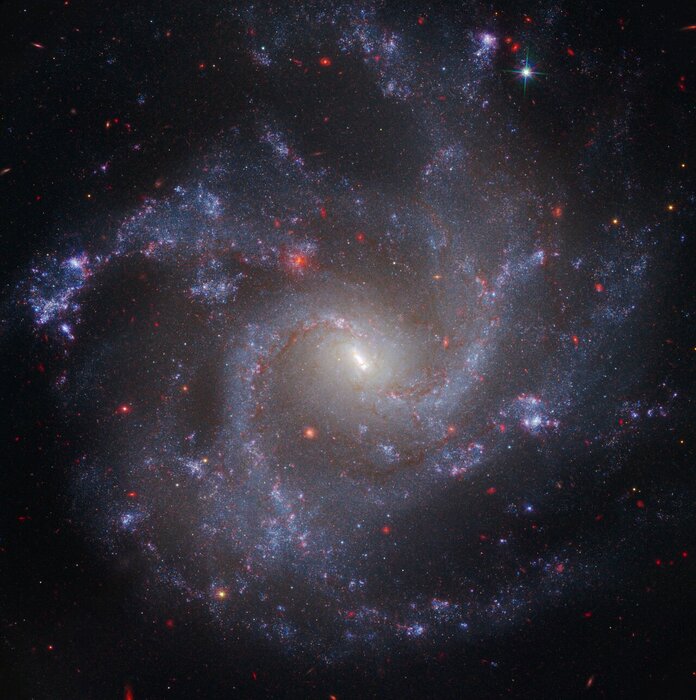This was the collision of at least three clusters of galaxies 1:18
(CNN) --
Astronomers used the James Webb Space Telescope to go back in time to the earliest days of the universe, and they discovered something unexpected.
The space observatory found six huge galaxies that existed between 500 and 700 million years after the big bang that created the universe.
According to a new study published Wednesday in the academic journal
Nature
, the finding completely contradicts existing theories about the origin of galaxies.
"These objects are much larger than anyone expected," says Joel Leja, study co-author and Assistant Professor of Astronomy and Astrophysics at Pennsylvania State University.
"We expected to find only tiny, young, baby galaxies at this time, but we have discovered galaxies as mature as our own at what was previously understood to be the dawn of the universe."
NASA discovers hundreds of black holes in galaxies where they were not thought to exist
The telescope observes the universe in infrared light, invisible to the naked eye, and is capable of detecting the faint light of ancient stars and galaxies.
By peering into the distant universe, the observatory can essentially look back in time to about 13.5 billion years ago (scientists have determined that the universe is about 13.7 billion years old).
"The revelation that the formation of giant galaxies began very early in the history of the universe completely changes what many of us believed to be established science," says Leja.
"We've been informally calling these objects 'universe breakers,' and so far they have lived up to their name."
The galaxies are so massive that they conflict with 99% of models representing the earliest galaxies in the universe, meaning scientists have to rethink how galaxies formed and evolved.
Current theory suggests that galaxies began as small clouds of stars and dust that grew larger over time.
advertising
Webb took images of all six huge galaxies.
One of them (lower left) could contain as many stars as our Milky Way, but is 30 times more compact.
Credit: NASA/ESA/CSA/I.
Labbe
"We looked for the first time in the very early universe and we had no idea what we were going to find," Leja said.
"It turns out that we found something so unexpected that it actually creates problems for science. It calls into question the whole picture of the formation of the first galaxies."
Investigation of the first galaxies
Leja and her colleagues began analyzing the Webb data, along with the first high-resolution images of the telescope, once they were published in July.
The galaxies appeared as large points of light, and the team was surprised to see them;
so much so that they thought they had made a mistake in interpreting the data.
A journey into the universe never seen before, with the best images of 2022 from the James Webb telescope
"When we got the data, everyone started to investigate and these massive things appeared very quickly," Leja said.
"We started doing the modeling and trying to figure out what they were, because they were so big and shiny.
My first thought was that we had made a mistake and that we would find it and move on with our lives.
But we haven't found that bug yet, despite trying many times."
One way to determine why the galaxies grew so quickly is by taking a spectral image of the galaxies, which involves splitting the light into different wavelengths to define various elements, as well as determining the actual distance of the galaxies, Leja said.
The spectroscopic data will provide a more detailed view of the galaxies and their impressive size.
"A spectrum will tell us immediately if these things are real or not," Leja said.
"It will show us its size and its distance. The funny thing is that we have all these things that we hope to learn from James Webb and this was nowhere near the top of the list. We have found something that we never thought to ask the universe about, and it has happened much faster than I thought, but here we are."
It is also possible that the galaxies identified with Webb's data are actually something else entirely.
"This is our first look this far back, so it's important that we keep an open mind about what we're looking at," Leja said.
"Although the data indicates that these are probably galaxies, I think there is a real possibility that some of these objects could turn out to be hidden supermassive black holes. In any case, the amount of mass we have discovered means that the known mass in stars in this period of our universe is up to 100 times larger than we previously thought. Even if we cut the sample in half, it's still a staggering change."
webb telescope











/cloudfront-eu-central-1.images.arcpublishing.com/prisa/KMEYMJKESBAZBE4MRBAM4TGHIQ.jpg)


/cloudfront-eu-central-1.images.arcpublishing.com/prisa/EXJQILQR5QI7OMVRTERD7AEZAU.jpg)
